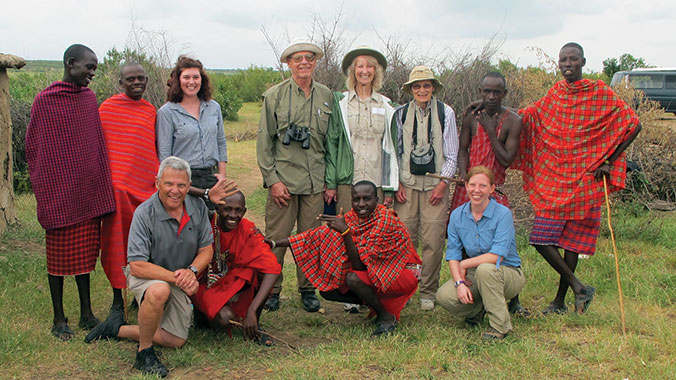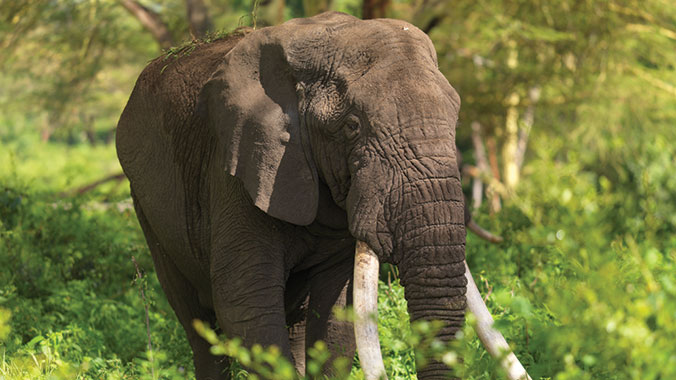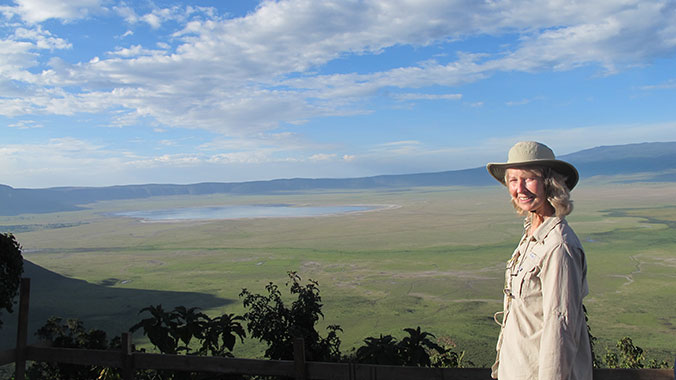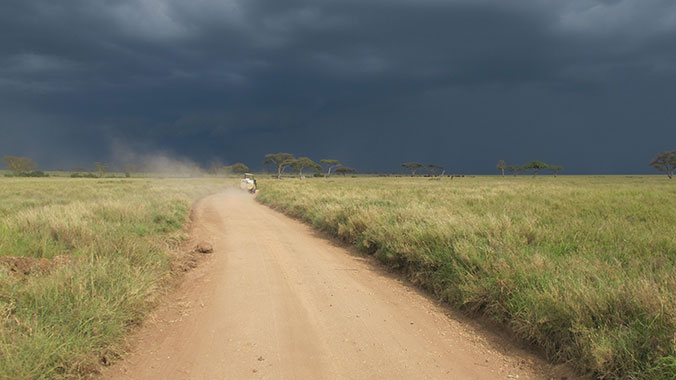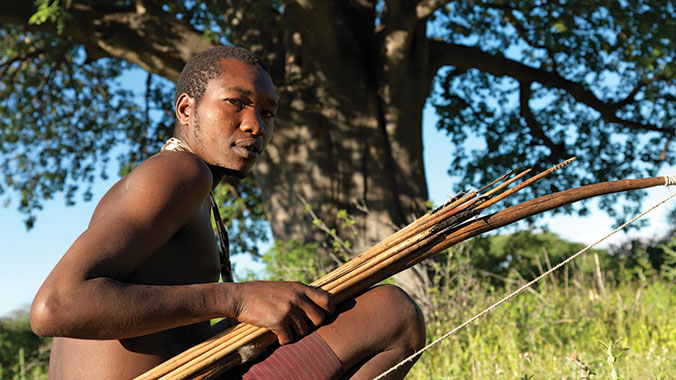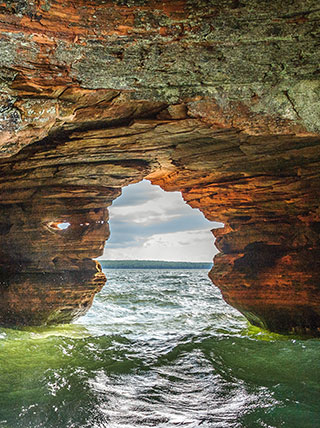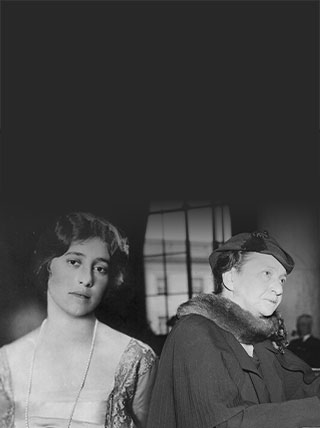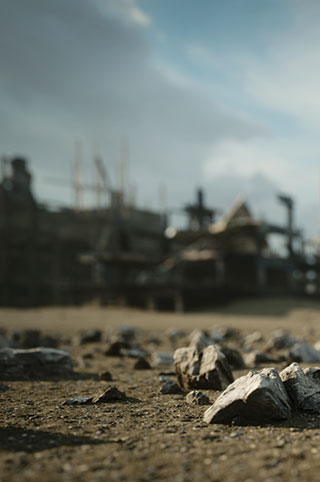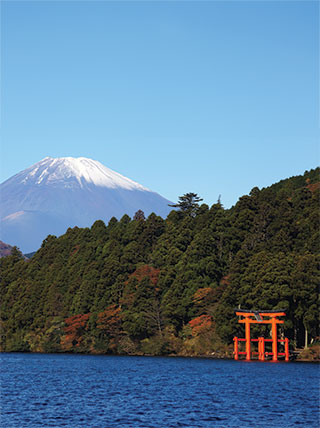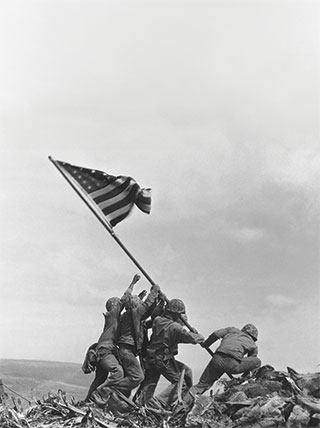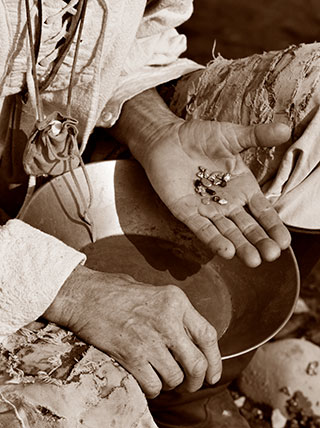
Tanzania and the Great East African Migration
Enroll with Confidence
We want your Road Scholar learning adventure to be something to look forward to—not worry about. Learn more
Protecting the Environment
We offset a portion of the emissions created by your travel. Learn more
At a Glance

What You'll Learn
- Follow the animals of the Great Migration.
- Learn about the contribution of Louis and Mary Leakey during a field trip to Olduvai Gorge.
- Learn how the migration impacts the lives of the indigenous people at a Maasai village and a rural community.
General Notes

Please note: This expert may not be available for every date of this program.

Activity note: From the international airport to the hotel is about 30 miles; approximately 1-1.5 hours. Hotel check-in begins at 3:00 p.m. This is an international travel day; no meals or program activities are scheduled on this day. See your program’s "Getting There" section regarding transfers.
Evening: At leisure to relax and get a good night’s rest for the day ahead. Prepare luggage for check out tomorrow.
Activity note: From Arusha to Tarangire National Park is about 100 miles; approximately 3.5 hours.
Breakfast: At the lodge we'll enjoy a selection of hot and cold dishes with tea and coffee.
Morning: 8:30 a.m. Orientation: The Group Leader will greet everyone with a warm welcome and lead introductions. We will review the up-to-date program schedule and any changes, discuss roles and responsibilities, logistics, safety guidelines, emergency procedures, and answer any questions you may have. Free time is reserved for your personal independent exploration. The Group Leader will be happy to offer suggestions. Meals on our program feature local cuisine. Unless otherwise specified, all transportation during this program will be provided by 4x4 safari vehicles with pop tops. Each vehicle can accommodate 6-7 passengers (plus the driver/guide) in window seats. Please note that program activities, schedules, and personnel may need to change due to local circumstances. In the event of changes, we will alert you as quickly as possible. Thank you for your understanding. Before departing the hotel on our first field trip, we'll enjoy an expert presentation on Tanzania's history and current events, plus the country's unique role in East Africa. After checking out of the hotel, we'll drive to Shanga Beads—an inspirational artisan group based in Arusha—for a presentation led by members of the project. Shanga Beads produces beautiful and unique jewelry out of recycled materials. The talented artisans who create the one-of-a-kind handcrafted pieces are physically handicapped and would generally be unable to find work in Tanzania. Proceeds from the business go toward teaching and employing more physically challenged artisans.
Lunch: At Cultural Heritage House.
Afternoon: Departing Arusha, we’ll journey southwest to Tarangire National Park and check in to our lodge upon arrival. After some time to freshen up and relax, we’ll have an orientation to the lodge, then assemble for a presentation by our Group Leader on the Elephants of Tarangire National Park and an introduction to local conservation efforts.
Dinner: At the lodge.
Evening: At leisure.
Activity note: Early morning game drive in the national park, focus on elephants of Tarangire and baobab trees.
Breakfast: At the lodge we'll enjoy a selection of hot and cold dishes with tea and coffee.
Morning: Before breakfast, we'll embark on a game drive in the national park. Our focus today will be on the elephants of Tarangire and the seemingly inverted baobab trees that dot the landscape. Tarangire has one of the highest elephant population densities in Tanzania, making this a prime location for observing these social pachyderms. Upon returning to the lodge, we'll have a late breakfast followed by free time. Take this opportunity to recharge your batteries after today's early start, enjoy the lodge amenities, and ready yourself for our afternoon activities.
Lunch: At the lodge.
Afternoon: We’ll head out for another game drive in Tarangire National Park. The Tarangire River snakes through the national park that bears its name. Wildlife travel long distances; drawn to the area's only permanent river. The 1,096 square miles of protected lands are home to a large variety of game such as: wildebeests, elephants, zebras, gazelles, elands, gerenuks, lions and leopards. Extensive grasslands, dusted with the occasional acacia or baobab tree, provide the optimum conditions for viewing wild animals. Bird lovers will not be disappointed-- there are more than 500 avian species found at this park including: Yellow-collared Lovebirds, Rufous-tailed Weavers, Ashy Starlings, Stocking-thighed Ostriches, and Kori Bustards. We’ll return to the lodge with time to freshen up and relax before dinner.
Dinner: At the lodge.
Evening: At leisure. Prepare for check out and transfer in the morning.
Activity note: From Tarangire to Mto wa Mbu is about 66 miles; approximately 2 hours. From Mto wa Mbu to Lake Manyara is about 5.5 miles. Although not required, previous participants have enjoyed taking coloring pencils/pens and other basic supplies to donate to the local school. Slow paced walking on flat, unpaved village paths.
Breakfast: At the lodge.
Morning: We’ll check out and begin our transfer to Lake Manyara. Visit to a local school for interaction with the students. En route, we'll stop at Mto Wa Mbu Village to meet a variety of the village folk as they go about their daily tasks.
Lunch: In the village with a local family.
Afternoon: Next, we'll visit an open-air market to sample a bit of local culture and view the types of products being sold. Arriving at the lodge, we’ll check in with some time to freshen up and relax before dinner. The lodge is built in a style reminiscent of a Maasai village, situated on a high ridge with beautiful views of Lake Manyara.
Dinner: At the camp.
Evening: At leisure. Prepare for check out and transfer in the morning.
Activity note: From Lake Manyara to C. Serengeti Camp is about 124 miles, usually just over 4 hours.
Breakfast: Early, at the camp.
Morning: Check out and load vehicles. Early morning, we’ll visit a Maasai village to experience the simple and uncluttered lifestyle of the Maasai. From there, we’ll travel to the Central Serengeti region.
Lunch: Boxed lunch en route.
Afternoon: We’ll continue our transfer to Serengeti National Park. After going through the gates, we’ll have our first game drive in Central Serengeti. Here, the open grasslands are interspersed with small rocky outcrops, home to small mammals and reptiles that are not touched by the migration. This is also hyena country, which brings into focus the role of scavengers as “waste management” specialists of the migration. We’ll then proceed to the camp, check in, and have a site orientation.
Dinner: At the camp.
Evening: At leisure.
Breakfast: Early morning at the camp.
Morning: On our game drive this morning, we’ll search for big cats — lion and cheetah — and learn whether lions follow the migration. After what we hope will be an exciting morning, we’ll return to camp.
Lunch: At the camp.
Afternoon: On this afternoon’s game drive, we’ll search for the unsung little creatures of the Serengeti — such as the dung beetle — and the vital role they play the overall ecology of the migration. We’ll return to camp with time to freshen up and relax before dinner.
Dinner: At the camp.
Evening: We'll gather for a Group Leader presentation on the "Great Migration" and ponder the question of whether the future of the migration is in jeopardy. Then prepare for check out and transfer in the morning.
Activity note: From C. Serengeti to S. Serengeti is about 50 miles, approximately 2 hours.
Breakfast: At the camp.
Morning: After checking out, we’ll head south to Ndutu, with a game drive en route, followed by a visit to the Serengeti Park Headquarters. A presentation by a park representative will address the role of rangers and staff of Serengeti National Park in monitoring and protecting wildlife of the park.
Lunch: At Serengeti Park Headquarters, we'll have box lunches.
Afternoon: We’ll have another game viewing field trip en route to Ndutu, one of the favorite birthing places for wildebeests and zebras. The nutrient rich grasses in the southern Serengeti prepare the young wildebeests for the 800 mile journey that lies ahead. We’ll check in upon arrival at the camp with time to freshen up relax before our next activity, a discussion about wildebeests and their adaptation mechanisms.
Dinner: At the camp.
Evening: At leisure.
Breakfast: Early at the camp.
Morning: During this morning's game drive we will be on the lookout to witness the birthing of wildebeests. In the southern Serengeti, the young wildebeests grow quickly and gain strength for the long trek ahead. Lion, cheetah, and hyena revel in the easy pickings as they also nurture their young. Ready your cameras-- photographic opportunities are plentiful! We’ll return to camp after the field trip.
Lunch: At the camp.
Afternoon: Later in the afternoon, we’ll go on another game drive and focus on zebras. We’ll learn about these uniquely striped equines and what they do to ready themselves for the “great migration.” Returning to camp, we’ll join our Group Leader in a “sundowner” and a discussion on the significance of the migration on the two million people who live on the periphery of the Serengeti.
Dinner: At the camp.
Evening: At leisure. Enjoy our last evening together in the Serengeti, then prepare for check out and transfer in the morning.
Activity note: From S. Serengeti to Olduvai Gorge is about 34 miles, approximately 1.5 hours. From Olduvai Gorge to Ngorongoro is about 33 miles, approximately 1.5 hours.
Breakfast: At the camp.
Morning: We’ll transfer to the Ngorongoro Crater via Olduvai Gorge, the renowned “Cradle of Mankind” archaeological site where Louis and Mary Leakey made their discovery of Homo Habilis. A local expert will accompany us on a walk through the archaeological site while detailing the lifework of Louis and Mary Leakey and the early human artifacts found at Olduvai.
Lunch: At Olduvai Gorge, we’ll have boxed lunches.
Afternoon: We'll continue our transfer to Ngorongoro. When we reach the rim, we’ll pause to take in the first breathtaking view of the Ngorongoro Crater. This is truly one of nature's great spectacles with thousands of animals constantly on the move around the crater floor that is 12 miles in diameter. We’ll move on and check in, freshen up, and regroup for a Group Leader presentation on formation of the crater and the Ngorongoro Conservation Area, a UNESCO World Heritage Site. From the UNESCO “Outstanding Universal Value” inscription: The Ngorongoro Conservation Area (more than 2 million acres, 809,440 hectares) spans vast expanses of highland plains, savanna, savanna woodlands and forests, from the plains of the Serengeti National Park in the north-west, to the eastern arm of the Great Rift Valley. The area was established in 1959 as a multiple land use area, with wildlife coexisting with semi-nomadic Maasai pastoralists practicing traditional livestock grazing. It includes the spectacular Ngorongoro Crater, the world’s largest caldera, and Olduvai Gorge, a 14 km long deep ravine. It has global importance for biodiversity conservation in view of the presence of globally threatened species such as the black Rhino, the density of wildlife inhabiting the Ngorongoro Crater and surrounding areas throughout the year, and the annual migration of wildebeest, zebra, Thompson’s and Grant’s gazelles, and other ungulates into the northern plains.
Dinner: At the camp.
Evening: At leisure.
Activity note: From Ngorongoro to Karatu is about 13 miles. Leisurely paced walk on paved and unpaved paths.
Breakfast: Early at the camp.
Morning: After check out, we’ll climb into 4x4 vehicles for our descent into the crater and a full morning game drive amid one of the most extraordinary concentrations of wildlife on earth. Viewing animals from such relatively close range, with the wall of the crater as backdrop, provides opportunities for incredible photos. Next, we'll transfer to Karatu, arriving for check in at the lodge in time for lunch.
Lunch: At the lodge.
Afternoon: Later in the day, we will join our Group Leader in an exploratory walk around the lodge's farm and coffee plantation for a look at the way of life and agricultural practices of a small local farm.
Dinner: At the lodge. Enjoy your last night in Tanzania among newfound Road Scholar friends.
Evening: At leisure. Prepare for check out and transfer in the morning.
Activity note: From Karatu to Arusha is about 90 miles, approximately 2.5 hours. Hotel day rooms in Arusha have a 6:00 p.m. check out. Please note that your program does not include overnight hotel reservations for this evening. See your program’s "Getting There" section regarding transfers.
Breakfast: At the lodge.
Morning: After check out, we will begin our transfer to Arusha. Before arriving at our hotel, we will pay a visit to a local home to enjoy a family-hosted meal.
Lunch: At a local home.
Afternoon: We will arrive at the hotel where we have reserved day room accommodations. This provides an opportunity to relax, finish packing, and freshen-up before transferring to the airport for night flights to North America.
Dinner: At the hotel, we will enjoy a light snack before check out. This concludes the program. If you are returning home, safe travels. If you are staying on independently, have a wonderful time. If you are transferring to another Road Scholar program, detailed instructions are included in your Information Packet for that program. We hope you enjoy Road Scholar learning adventures and look forward to having you on another rewarding program in the future. Don’t forget to join our Facebook page and follow us on Instagram. Best wishes for all your journeys!
Recommended For You


